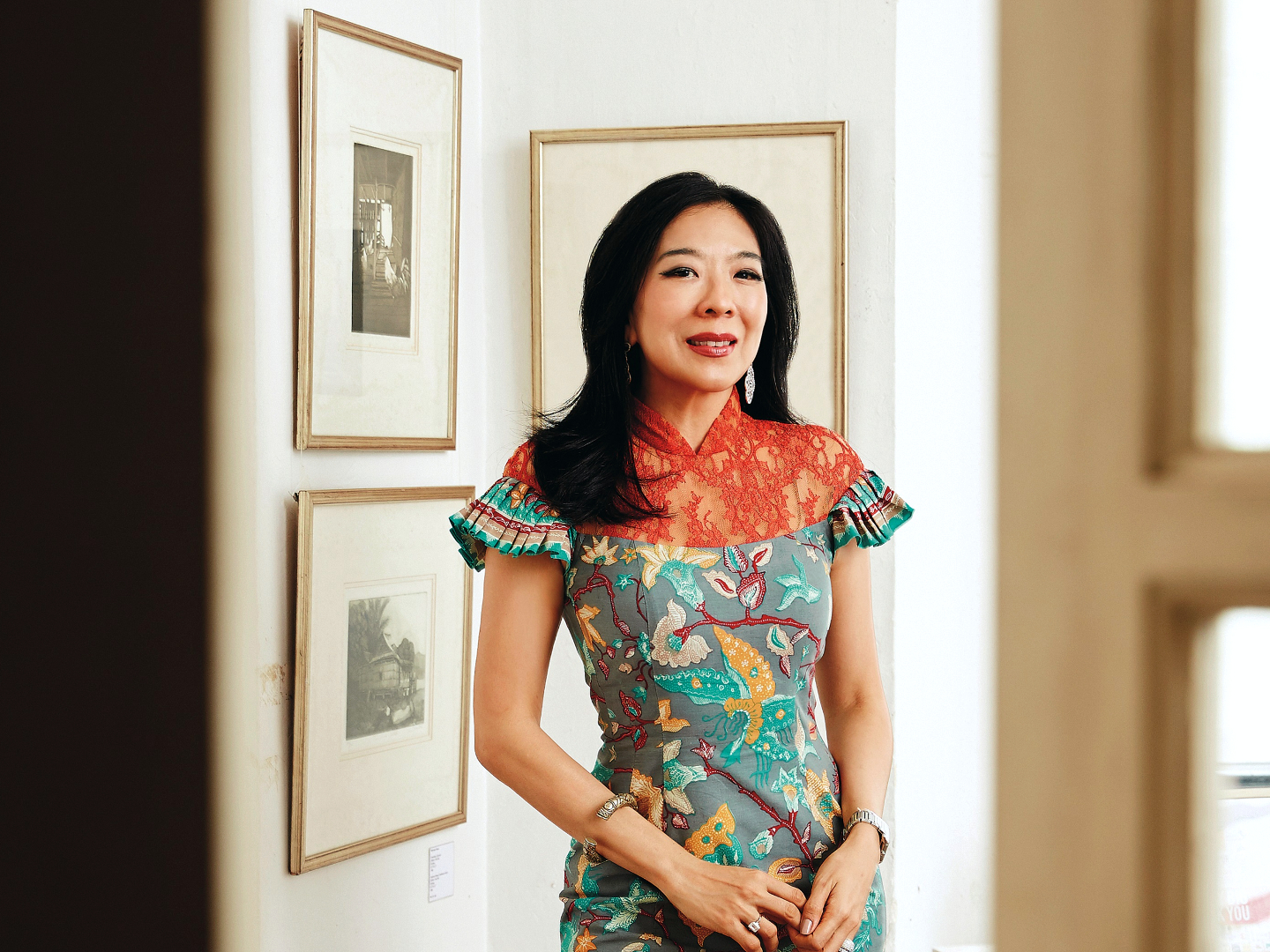
Lim hopes Malaysian art gains the international recognition it deserves (Photo: Soophye)
Options: Congratulations on 20 years of Wei-Ling Gallery. Can you share with us some key highlights of the last two decades?
Lim Wei-Ling: We have had 224 exhibitions to date, and 125 Malaysian art books and catalogues published from the time the gallery first started in May 2002 as the Townhouse Gallery with my Botanica exhibition. We renamed it ‘Wei-Ling Gallery’ in 2005, moved to our current premises in Brickfields, Kuala Lumpur, and kickstarted things with 18@8, a show that featured 18 contemporary artists.
The key milestones are numerous and include, but are not limited to, the following: In November 2006, we curated KUL-KHI, an exhibition and our first international foray, at renowned Pakistani sculptor Amin Gulgee’s gallery. It also marked the first time Malaysian art was seen in Pakistan.
Two years later, Wei-Ling Gallery was invited to take part in the China International Gallery Exposition in Beijing, an event which showed contemporary Malaysian art in the country for the first time.
In January 2011, we presented Ivan Lam at Singapore’s inaugural ArtStage and debuted renowned Indian artist Paresh Maity’s first solo in Malaysia later that year. There’s also the time we were the first and only Malaysian gallery selected to present Lam at the prestigious Art Basel Hong Kong … the list is endless. More recently, I must mention Anida Youe Ali’s monumental installation, The Buddhist Bug, which debuted for the first time in KL at Wei-Ling Contemporary.
_mg_3368edt.jpg
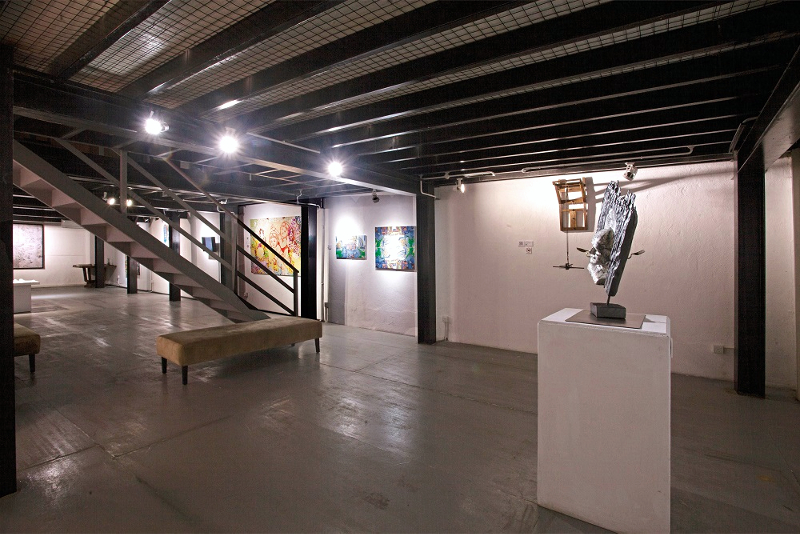
You were also responsible for the first Malaysian Pavilion at the 58th La Biennale di Venezia, correct?
Yes. My team and I were appointed by the Ministry of Tourism, Arts and Culture to spearhead and curate Malaysia’s first National Pavilion at the 58th La Biennale in Venice, Italy. The project, Holding Up a Mirror, featured four local artists — Anurendra Jegadeva, H H Lim, Ivan Lam and Zulkifli Yusoff — and made Malaysian art history. I must add that the pavilion was only made possible with the patronage of Creador Foundation, BRDB and Seeing Eye Films.
And how do you think the local art scene has evolved over the past two decades?
I have had the privilege of ringside seats watching the artists, particularly those with whom I work, grow, evolve and develop on both personal and professional fronts. It is a journey we have all been on together and we continue walking the path. When we started the gallery and entered the scene, we were the new kids on the block. There were far fewer galleries, fewer real collectors supporting the scene.
Artists were showing everywhere and anywhere. With no real art ecosystem in place and gallery representation virtually non-existent, artworks were priced at incredibly low levels. There was, however, a much stronger and active institutional presence in the form of Galeri Petronas, Bank Negara and Balai Seni Lukis, which were also patrons at the time. The last 20 years have seen a surge — in galleries, art spaces, collectors, collectives — and a somewhat more professional working environment where artists are represented by galleries, and some levels of integrity are observed.
The art ecosystem has certainly evolved too, with interest in the secondary market (through local auctions) as well as the onset of art fairs in Kuala Lumpur and the region. All of this has contributed collectively towards creating a much more vibrant and interesting art scene. Everything is slowly moving and progressing in the right direction.
chen-wei-meng-arrivals-1030x563.jpg
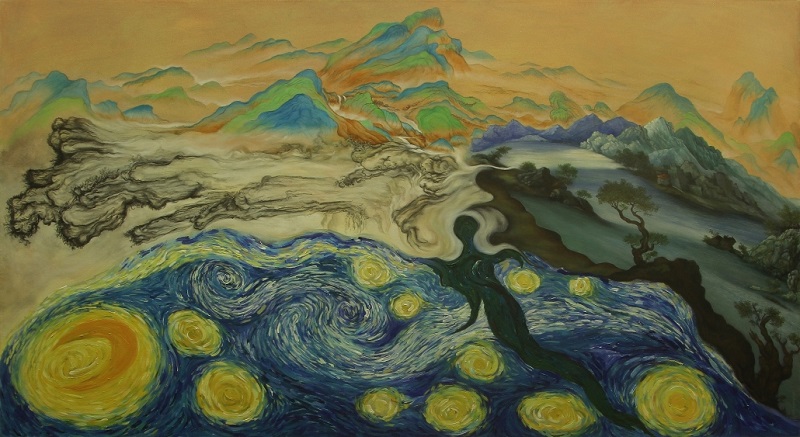
What have been the greatest learning points for you so far?
To always remain true to my principles and not compromise on anything when it comes to art, no matter whom or what it might be. Also, never get too comfortable. Be ready to grab the bull by its horns as opportunities sometimes only knock once. Work closely with the like-minded and whose aspirations align with yours. Maintain relationships.
An artist who has true conviction in himself always puts his art first — everything else is secondary. The most successful and critically-acclaimed artists I have worked with have also been the most humble and professional. Lastly, when there is true substance, there is no insecurity. When the work cannot hold its own, that is when issues arise.
What is your vision for the next 20 years of Wei-Ling Gallery then?
To continue providing a platform for Malaysian artists to realise meaningful work, expanding into new markets, working with more international artists and setting up an art foundation or school in order to support the next generation.
And your hopes and aspirations for Malaysian art?
That it gains the international recognition it deserves and for our artists to be represented in major museums, institutions and biennales around the world. I would love to see a private or public art institution or gallery dedicated and committed to supporting and educating the public about contemporary art practices in the country and region.
tanks_staircase_tate_modern_3_1.width-1440.jpg
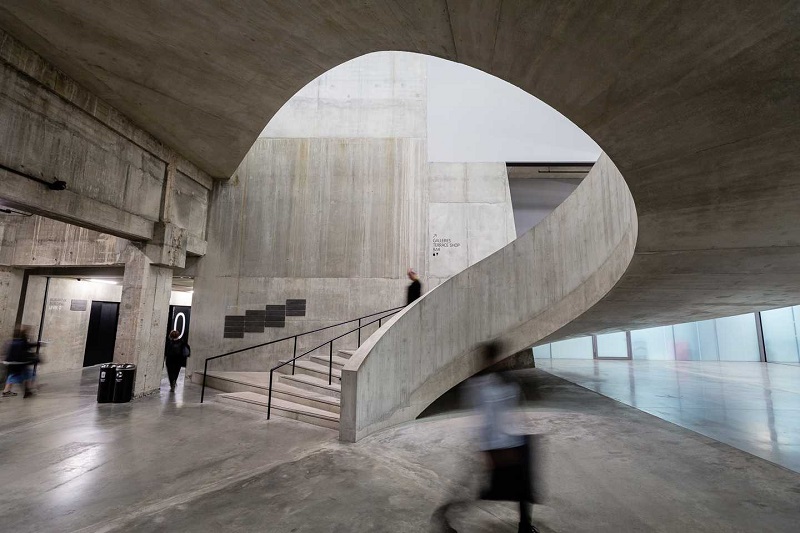
Which books do you deem essential reading for those who want to learn about or appreciate art more?
Richard Polsky’s I Sold My Andy Warhol (Too Soon): A Memoir; Don Thomson’s The $12 Million Stuffed Shark: The Curious Economics of Contemporary Art; Art Lover: A Biography of Peggy Guggenheim; and William Middleton’s Double Vision.
What are you reading right now?
We Should All Be Feminists by Chimamanda Ngozi Adichie.
Which galleries would you recommend as the ultimate to visit in the world, and why?
Tate Modern in London, for a glimpse into where contemporary art stands today. I especially love the turbine hall and the projects they commission to show there; the Museum of Modern Art (MoMA) in New York City to view iconic pieces from its modern collection; and the Leeum Museum in Seoul for the juxtaposition of well-known names on the international art scene with works by leading and emerging South Korean artists — something so refreshing to see. However, I have seen some of the most engaging and thought-provoking works at international biennales and festivals. I must recommend visiting the Venice Art Biennale, the Kochi Biennale and Documenta in Kassel, Germany.
Did you have an art epiphany though? Was there an exact moment when the art bug bit?
I have always been — and still am — a very visual person. As a kid, I would always look at the art in the homes of relatives or friends’ parents. I remember being especially drawn to the more pop or surrealist works.
In university, I sat for Australian artist Stewart Macfarlane and featured in his painting Lagoon, circa 1990. He gifted me a small artwork as a thank-you, which I keep till today. I also bought my first artwork from a fellow art student and I have not looked back since.
lagoon-1989-122x152.jpg
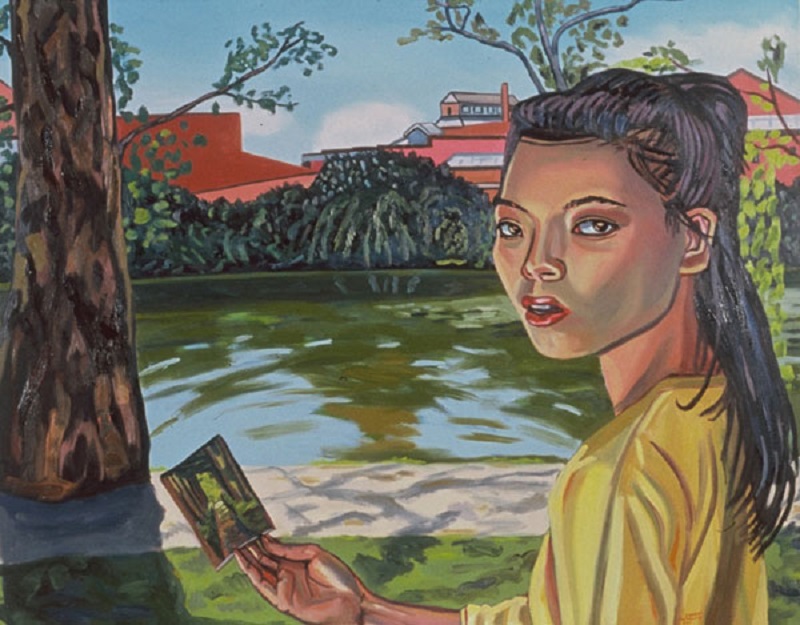
What are you listening to right now?
In Your Eyes by The Weeknd.
What was your childhood ambition though?
To be an architect, of course! [Lim’s father is renowned architect Prof Dr Jimmy Lim.]
Where will you be travelling to next?
Jakarta — to catch up with friends and attend an art fair; and Bangkok — to eat, get massages and discover what the city has to offer post-Covid.
Describe your idea of a perfect weekend.
An escape from KL with good friends and family, where we can catch up properly and laugh over food and drink, have deep conversations about life and relationships. If there is some talk about art in the equation somewhere, then it would just about make everything complete. ![]()
This article first appeared on July 11, 2022 in The Edge Malaysia.


